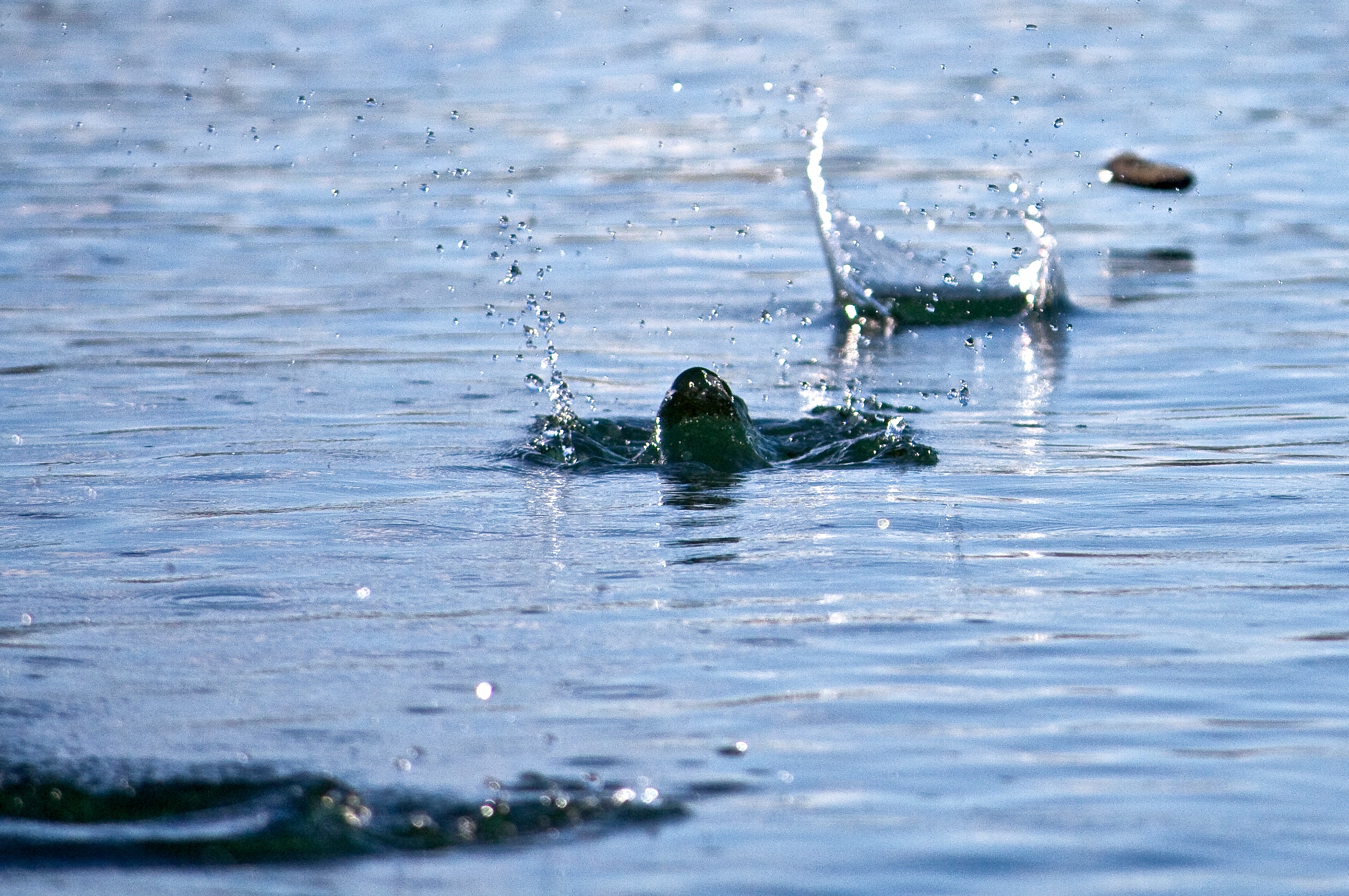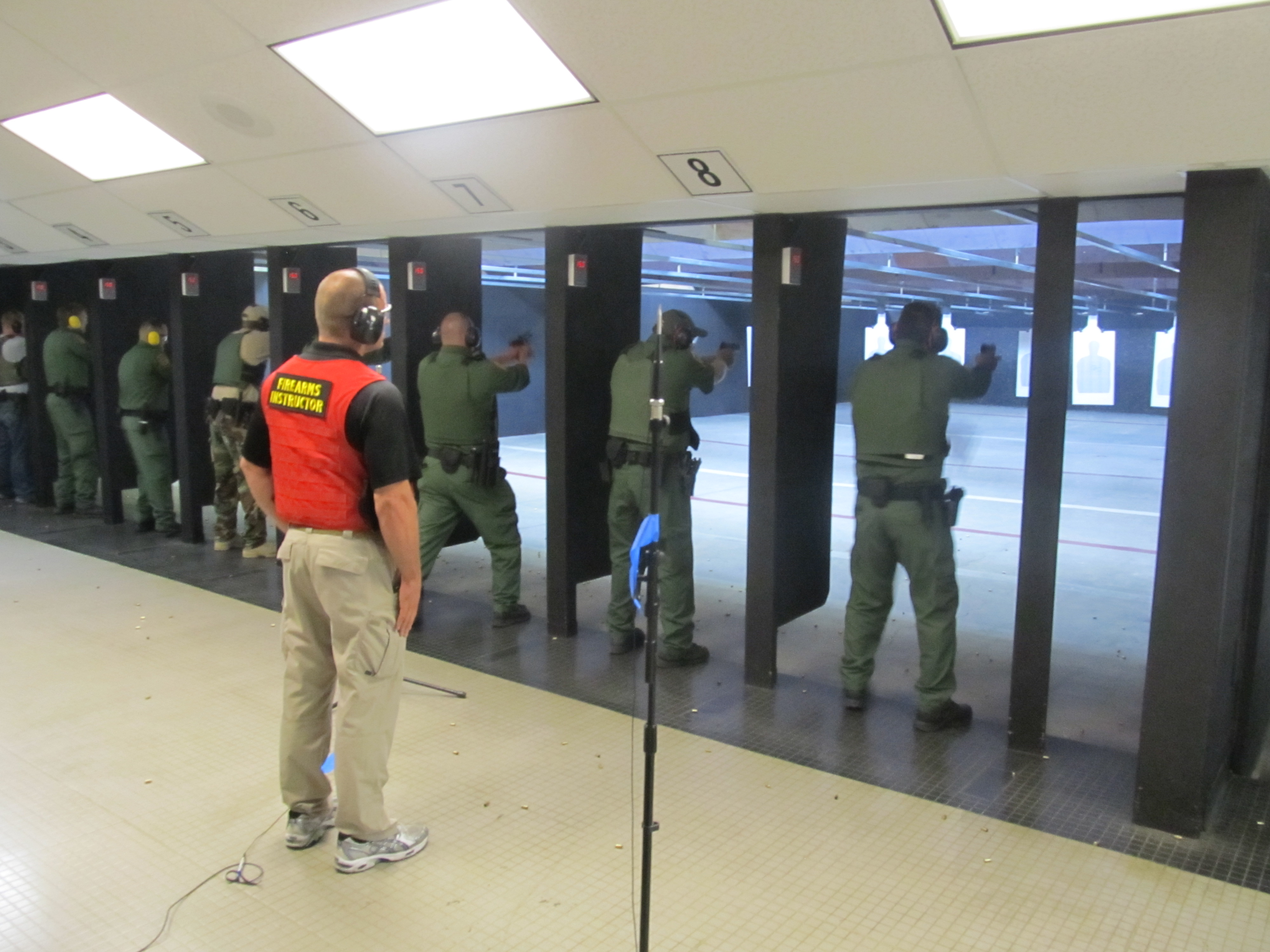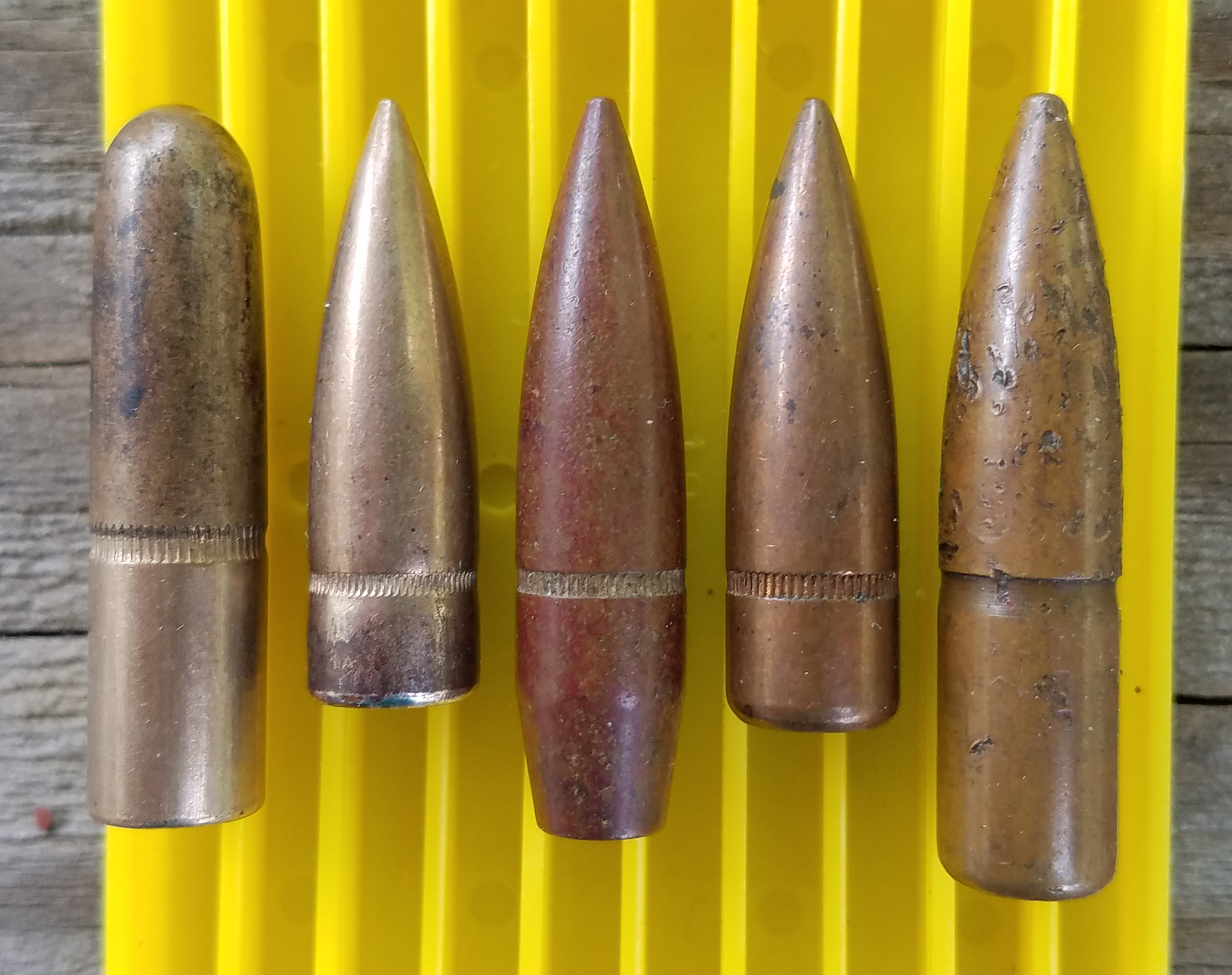|
Ricochet
A ricochet ( ; ) is a rebound, bounce, or skip off a surface, particularly in the case of a projectile. Most ricochets are caused by accident and while the force of the deflection decelerates the projectile, it can still be energetic and almost as dangerous as before the deflection. The possibility of ricochet is one of the reasons for the common firearms safety rule "Never shoot at a flat, hard surface." Ricochets can occur with ''any'' caliber, but short or round ricocheting bullets may not produce the audible whine caused by tumbling irregular shapes. Ricochets are a hazard of shooting because, for as long as they retain sufficient velocity, ricocheting bullets or bullet fragments may cause collateral damage to animals, objects, or even the person who fired the shot. Variables Ricochets occur when a bullet or bullet fragment is deflected by an object rather than penetrating and becoming embedded in that object. Ricochet behavior may vary with bullet shape, bullet material, s ... [...More Info...] [...Related Items...] OR: [Wikipedia] [Google] [Baidu] |
Ricochet Firing
Ricochet firing is the firing of artillery at a low angle and non-maximal power so as to cause the shells to skip across the ground. Background In traditional artillery tactics, either a cannon, a howitzer or occasionally a mortar would fire a shot that would just clear the outer parapet of a fortification, and then would bounce or ricochet inside the fortification's bounds. One of the primary purposes of ricochet fire was to dismount artillery and guns positioned on an enemy's fortifications. Additionally, ricochet fire could also be used to cause chaos behind an enemy army's fortifications, as the ricocheting cannonball would devastate logistical structures not fortified to withstand cannon fire. The first European use of ricochet fire (''tir à ricochet'') has been accredited to the Marquis de Vauban A marquess (; french: marquis ), es, marqués, pt, marquês. is a nobleman of high hereditary rank in various European peerages and in those of some of their former col ... [...More Info...] [...Related Items...] OR: [Wikipedia] [Google] [Baidu] |
Stone Skipping
Stone skipping and stone skimming are considered related but distinct activities: both refer to the art of throwing a flat stone across the water in such a way (usually sidearm) that it bounces off the surface. The objective of "skipping" is to see how many times a stone can bounce before it sinks into the water; the objective of "skimming" is to see how far a bouncing stone can travel across the water before it sinks into the water. In Japan, the practice is referred to as ''Mizu Kiri'', which loosely translates to "water cutting". In ''Mizu Kiri'' contests, both skimming and skipping principles, as well as a throw's overall aesthetic quality, are taken into account to determine the winners. History The act of skipping stones was mentioned by Marcus Minucius Felix in his dialogue ''Octavius'', in which he described children playing a game on the beach. Greek scholar Julius Pollux also noted the game in ''Onomastikon''. Among the first documented evidence stone skipping as a sp ... [...More Info...] [...Related Items...] OR: [Wikipedia] [Google] [Baidu] |
Shotgun Shell
A shotgun shell, shotshell or simply shell is a type of rimmed, cylindrical (straight-walled) cartridges used specifically in shotguns, and is typically loaded with numerous small, pellet-like spherical sub- projectiles called shot, fired through a smoothbore barrel with a tapered constriction at the muzzle to regulate the extent of scattering. A shell can sometimes also contain only a single large solid projectile known as a slug, fired usually through a rifled slug barrel. The hull usually consists of a paper or plastic tube often covered at the base by a metallic head cover which retains a primer, and the shot charge is typically contained by a wadding/sabot inside the case. The caliber of the shotshell is known as its gauge. The projectiles are traditionally made of lead, but other metals such as steel, tungsten and bismuth are also used due to restrictions on lead, or for performance reasons such as achieving higher shot velocities by reducing the mass of the sh ... [...More Info...] [...Related Items...] OR: [Wikipedia] [Google] [Baidu] |
Shooting Range
A shooting range, firing range, gun range or shooting ground is a specialized facility, sports venue, venue or playing field, field designed specifically for firearm usage qualifications, training, practice or shooting sport, competitions. Some shooting ranges are operated by military or law enforcement agencies, though the majority of ranges are privately owned by civilians and sporting clubs and cater mostly to recreational shooters. Each facility is typically overseen by one or more supervisory personnel, variously called a ''range master'' or "Range Safety Officer" (RSO) in the United States, or a ''range conducting officer'' (RCO) in the United Kingdom. Supervisory personnel are responsible for ensuring that all weapon safety rules and relevant gun law, government regulations are followed at all times. Shooting ranges can be indoor or outdoor, and may be restricted to certain types of firearm that can be used such as handguns or long guns, or they can specialize in cert ... [...More Info...] [...Related Items...] OR: [Wikipedia] [Google] [Baidu] |
Bullet Trap
A bullet trap (or pellet trap when used specifically for air guns) is a device to stop and collect projectiles fired at a shooting range to prevent overpenetrations and stray shots. Bullet traps typically use friction, impact or gradual deceleration to stop bullets. The bullet trap may also provide means to recycle bullet materials and/or prevent release of toxic heavy metals (such as lead dust from fragmented bullets) from the shooting range. Some bullet traps include a negative-pressure system to filter dust from air within the impact zone and/or capture area. Deceleration traps Deceleration-type bullet traps direct bullets into a helical or circular chamber in which the bullet will slide against the curved chamber wall until it gradually loses velocity from friction and drops to the bottom of the chamber, where it can be later collected. For use with multiple firing positions, the helical chamber often resembles a horizontal pipe, into which bullets are directed by uppe ... [...More Info...] [...Related Items...] OR: [Wikipedia] [Google] [Baidu] |
22 Long Rifle
The .22 Long Rifle or simply .22 LR or 22 (metric designation: 5.6×15mmR) is a long-established variety of .22 caliber rimfire ammunition originating from the United States. It is used in a wide range of rifles, pistols, revolvers, smoothbore shotguns, and submachine guns. In terms of units sold it is by far the most common ammunition in the world today. Common uses include hunting and shooting sports. Ammunition produced in .22 Long Rifle is effective at short ranges, has little recoil, and is cheap to purchase, making it ideal for training. History American firearms manufacturer J. Stevens Arms & Tool Company introduced the .22 Long Rifle cartridge in 1887. The round owes its origin to the .22 BB Cap of 1845 and the .22 Short of 1857. It combined the case of the .22 Long of 1871 with a bullet, giving it a longer overall length, a higher muzzle velocity and superior performance as a hunting and target round, rendering the .22 Extra Long cartridges obsolete. The .22 LR ... [...More Info...] [...Related Items...] OR: [Wikipedia] [Google] [Baidu] |
Cannon
A cannon is a large- caliber gun classified as a type of artillery, which usually launches a projectile using explosive chemical propellant. Gunpowder ("black powder") was the primary propellant before the invention of smokeless powder during the late 19th century. Cannons vary in gauge, effective range, mobility, rate of fire, angle of fire and firepower; different forms of cannon combine and balance these attributes in varying degrees, depending on their intended use on the battlefield. A cannon is a type of heavy artillery weapon. The word ''cannon'' is derived from several languages, in which the original definition can usually be translated as ''tube'', ''cane'', or ''reed''. In the modern era, the term ''cannon'' has fallen into decline, replaced by ''guns'' or ''artillery'', if not a more specific term such as howitzer or mortar, except for high-caliber automatic weapons firing bigger rounds than machine guns, called autocannons. The earliest known depict ... [...More Info...] [...Related Items...] OR: [Wikipedia] [Google] [Baidu] |
Armor-piercing Bullet
Armor-piercing bullets for rifle and handgun cartridges are designed to penetrate ballistic armor and protective shields intended to stop or deflect conventional bullets. Although bullet design is an important factor with regard to armor penetration, the ability of any given projectile to penetrate ballistic armor increases with increasing velocity. Rifle cartridges typically discharge bullets at higher muzzle velocity than handgun cartridges due to larger propellant charge. However, even the same cartridge (one that is interchangeable between specific rifles and handguns) fired from a rifle will, in almost all common cases, have a higher velocity than when fired from a handgun. This is due to the longer period of acceleration available within the longer gun barrel of rifles, which allow adequate time for the propellant to fully ignite before the projectile exits the barrel. For this reason, bullets fired from rifles may be more capable of piercing armor than similar or identic ... [...More Info...] [...Related Items...] OR: [Wikipedia] [Google] [Baidu] |
BB Gun
A BB gun is a type of air gun designed to shoot metallic spherical projectiles called BBs (not to be confused with similar-looking bearing balls), which are approximately the same size as BB-size lead birdshot used on shotguns ( in diameter). Modern BB guns usually have a smoothbore barrel with a caliber, and use steel balls that measure in diameter and in weight, usually zinc- or copper-plated for corrosion resistance. Some manufacturers still make the slightly larger traditional lead balls that weigh around , which are generally intended for use in rifled barrels (due to lead having better malleability and exerting less wear on riflings). The term "BB gun" is frequently used incorrectly to describe airsoft guns, which shoot plastic pellets (also often referred to as "BBs") that are larger (usually in diameter) but much less dense than metal BBs, and have significantly lower ballistic performance. The term is also sometimes used to describe a pellet gun, which sho ... [...More Info...] [...Related Items...] OR: [Wikipedia] [Google] [Baidu] |
Shotgun
A shotgun (also known as a scattergun, or historically as a fowling piece) is a long gun, long-barreled firearm designed to shoot a straight-walled cartridge (firearms), cartridge known as a shotshell, which usually discharges numerous small pellets (petrology), pellet-like spherical sub-projectiles called shot (pellet), shot, or sometimes a single solid projectile called a shotgun slug, slug. Shotguns are most commonly smoothbore firearms, meaning that their gun barrels have no rifling on the inner wall, but rifled barrels for shooting slugs (slug barrels) are also available. Shotguns come in a wide variety of calibers and Gauge (firearms), gauges ranging from 5.5 mm (.22 inch) to up to , though the 12-gauge (18.53 mm or 0.729 in) and 20-gauge (15.63 mm or 0.615 in) bores are by far the most common. Almost all are breechloading, and can be single-barreled, double barreled shotgun, double-barreled, or in the form of a combination gun. Like rifles, ... [...More Info...] [...Related Items...] OR: [Wikipedia] [Google] [Baidu] |
Muzzleloader
A muzzleloader is any firearm into which the projectile and the propellant charge is loaded from the muzzle of the gun (i.e., from the forward, open end of the gun's barrel). This is distinct from the modern (higher tech and harder to make) designs of breech-loading firearms. The term "muzzleloader" applies to both rifled and smoothbore type muzzleloaders, and may also refer to the marksman who specializes in the shooting of such firearms. The firing methods, paraphernalia and mechanism further divide both categories as do caliber (from cannons to small-caliber palm guns). Modern muzzleloading firearms range from reproductions of sidelock, flintlock and percussion long guns, to in-line rifles that use modern inventions such as a closed breech, sealed primer and fast rifling to allow for considerable accuracy at long ranges. Modern mortars use a shell with the propelling charge and primer attached at the base. Unlike older muzzleloading mortars, which were loaded the same way as ... [...More Info...] [...Related Items...] OR: [Wikipedia] [Google] [Baidu] |
Inelastic Collision
An inelastic collision, in contrast to an elastic collision, is a collision in which kinetic energy is not conserved due to the action of internal friction. In collisions of macroscopic bodies, some kinetic energy is turned into vibrational energy of the atoms, causing a heating effect, and the bodies are deformed. The molecules of a gas or liquid rarely experience perfectly elastic collisions because kinetic energy is exchanged between the molecules' translational motion and their internal degrees of freedom with each collision. At any one instant, half the collisions are – to a varying extent – inelastic (the pair possesses less kinetic energy after the collision than before), and half could be described as “super-elastic” (possessing ''more'' kinetic energy after the collision than before). Averaged across an entire sample, molecular collisions are elastic. Although inelastic collisions do not conserve kinetic energy, they do obey conservation of momentum. Sim ... [...More Info...] [...Related Items...] OR: [Wikipedia] [Google] [Baidu] |








